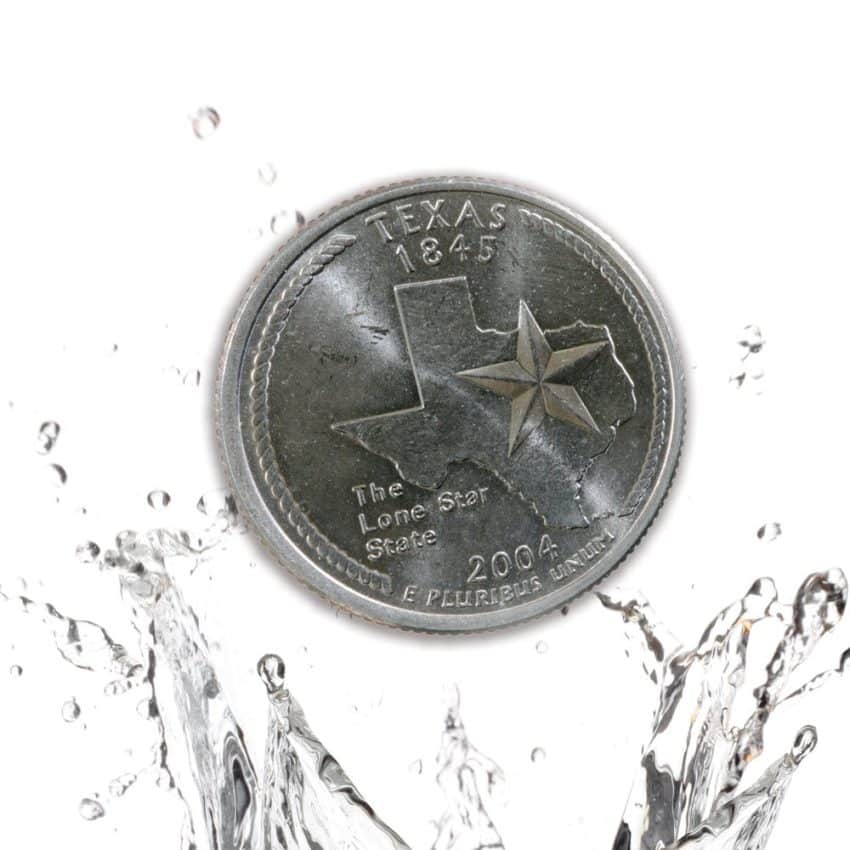
The majority of Texas is currently in a drought that has persisted for the past three years. John-Nielsen Gammon, State Climatologist warns that this drought could set additional records to the one established with 15 inches average precipitation in 2011, the driest year in state history. The annual state average was approximately 34 inches from 1981 until 2010, and in 2011 the state averaged only half this amount.
As of April 23, 2013, 99 percent of Texas was in some form of drought conditions, and the state’s reservoirs were only 66 percent full. Nearly 11 percent of the state is in exceptional drought. The Weather Monitor defines this category as, “exceptional and widespread crop/pasture losses; shortages of water in reservoirs, streams and wells creating water emergencies.
Drought is not new to Texas. The Texas State Historical Association reports that droughts have been recorded as a problem since Spaniards explored the state. Cabeza de Vaca found a population of Indian soil tillers near the site of present-day Presidio, where it had not rained for two years. A drought in Central Texas dried up the San Gabriel River in 1756, forcing the abandonment of a settlement of missionaries and Indians. Stephen F. Austin’s first colonists were hurt by drought in 1822, when their initial food crop of corn died from lack of moisture. Each decade since then has been marked by at least one period of severe drought.
When Dr. Ron Gill, Texas A&M AgriLife Extension Service, says that Texas weather is continual drought with intermittent floods, he is supported by Texas history. Droughts pose more danger today than in the past because of population growth.
“Texas uses about 711 million gallons of water each day with 60 percent going to agriculture, 15 percent to industry and 25 percent directly to the state’s 23.5 million citizens,” estimates the Texas Water Development Board (TWDB). “Population in Texas is expected to double by 2060 which could double water consumption. In the next 25 years, the fastest growing water user segments are projected to be cities and industry. By the 2040s, it is projected that more water will be used by cities and industry than by agriculture.”
Will Texas run out of water? TWDB’s answer is that eighty-five percent of the state’s projected population will not have enough water during drought conditions by 2060 if conservation is sidestepped and new sources are not developed.
The ray of hope in TWDB’s prediction is that water conservation and new sources of water can help avoid water deficits. Many groups and associations, including the state legislature, are working toward development of new sources, but this alone will not prevent water shortages. Conservation must also be practiced and is the responsibility of every individual including you and me. We must conserve water in our homes, businesses and on our land.
WATER CONSERVATION ON PASTURE AND RANGELAND
Grazing animals such as cattle and sheep contribute to water conservation on range and pasture when managed holistically. The holistic management grazing concept imitates grazing habits of the vast buffalo herds that once roamed the western United States. These animals grazed an area, moved to new grass and did not return to previously grazed ground until the grass fully recovered.
“In holistic management livestock density is increased to match available forage in order to maximize animal impact,” said Peggy Sechrist Holistic Management Certified Educator with Holistic Management International (HMI). “Hooves of animals pastured at a high stock density pulverize soil allowing more water penetration and nutrient cycling. Plants are grazed more evenly and there is better distribution of forage utilization, urine and manure. High stocking density also causes a more even distribution of litter as a soil cover. The layer of litter cools the soil, aids in water absorption and degrades into organic matter. Moving livestock to fresh manure-free ground results in improved animal nutrition and performance.”
After visiting two or three ranches under holistic management, it is easy to believe in the system. Forrest Armke, manager of the Ford Ranch near Brady, Texas has used holistic management for 25 years. In November 2011, his pastures were covered with knee-high little bluestem grass and the ranch had only received four inches of rainfall since January 1, 2011. Total rainfall for the year was six inches compared to a normal annual rainfall of 24 inches.
“In 2012, Ford Ranch was very dry following the extreme dry year in 2011,” said Armke. “We only feed hay to our bulls and to heifers while they are having their first calves. Last year we were able to harvest only 25 percent of a normal hay crop due to lack of rainfall. Our pastures suffered, but retained a good ground cover and had moderate growth. We grazed pastures for 7 days and let them rest for 60 days. During the 60-day rest periods we grew enough forage for another 7-day grazing period. We did not grow a surplus of forage in 2012, but were able to achieve enough recovery to maintain our existing herd numbers and retain 200 new replacement heifers.”
Emry Birdwell and Deborah Clark use stocker cattle to intensively manage their ranch near Henrietta, Texas. The ranch is divided into 50–90 acre paddocks. During the winter when cattle are purchased, they graze two or three herds. Starting in March, herds are combined into one large herd that is rotated through the paddocks. The average rest period for a paddock from March until summer is 50–60 days. By July of each year, if not sooner, the rest period is increased to allow ample time for grass recovery during the hot summer months. Summer rest periods vary from 90–120 days.
“During 2012, we had 3,100 head of cattle on native grass pasture and another 2,000 head on wheat,” said Birdwell. “Benefits of holistic management systems were evident in the performance of our cattle. We had more weight gain last year than in any of the previous eight years that we have operated the ranch.”
“Holistic management grazing increases plant diversity and returns rangeland to its condition prior to the overgrazing era of the 1800s,” stated Birdwell. “Our steers primarily graze little bluestem, Indian grass, switchgrass, blue grama and hooded windmill grass. Big bluestem is slowly re-establishing after years of absence and several previously overgrazed pastures on the ranch are showing recovery signs as a result of holistic management.”
“Another advantage of holistic management grazing is improved wildlife habitat,” said Armke. “Deer hunting is a good revenue stream for us, so we keep the animals in good condition. We monitor browse recovery periods and balance deer population size to match available vegetation.”
WATER CONSERVATION ON THE FARM AND AT HOME
Water is conserved on farms by maintaining healthy soils. One of the keys to restoring or maintaining soil health is to let nature do its work by avoiding tillage. A healthy soil is full of organic matter, earthworms and micro-organisms. By fragmenting organic matter, and increasing soil porosity and aggregation, earthworms can significantly increase the water-holding capacity of soils.
“A cover crop is needed on the soil 24 hours a day, seven days a week to build organic matter, hold water and stop erosion,” said Conservation Agronomists Ray Archuleta and Willie Durham of NRCS. “Continuous live or dead cover helps maintain soil health and protects it from heat and raindrop impact. Soil needs armor.”
There are also steps that can be taken to reduce water usage at home. The biggest opportunity to conserve water is in responsible lawn-care practices, such as watering once a week or less on a regular basis. Grass that is watered deeply and infrequently has a stronger root system. Do not over water. When water runs down the street, the lawn is being over watered.
Healthy lawn maintenance includes leaving grass clippings on the ground and letting grass grow slightly longer to create deeper roots and shade for the soil surface which increases moisture retention. Lawn size can be reduced with attractive gardens of native grasses, shrubs and trees.
Indoor water use is reduced by installing low-flow showerheads, toilets and water-efficient washing machines. Consider catching water that flows from the faucet while you are waiting for the hot water and using it to water plants. Reduce the number of times that you wash your car or other vehicles.
If we want water to drink in 2060, we need to promptly start doing our part in conserving the precious liquid.


